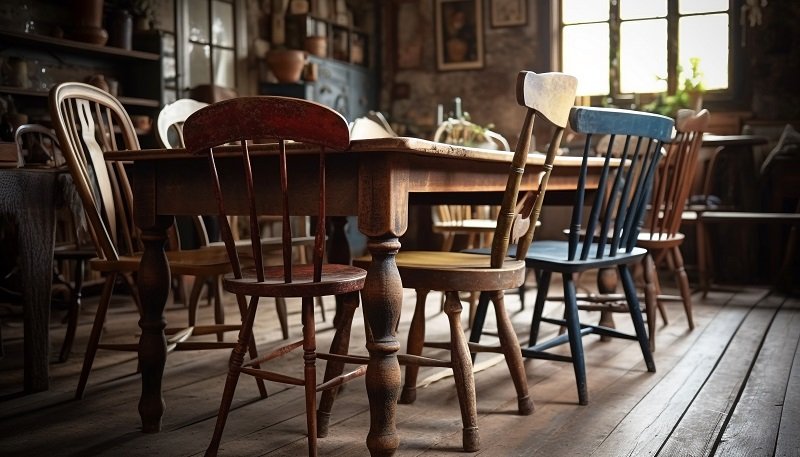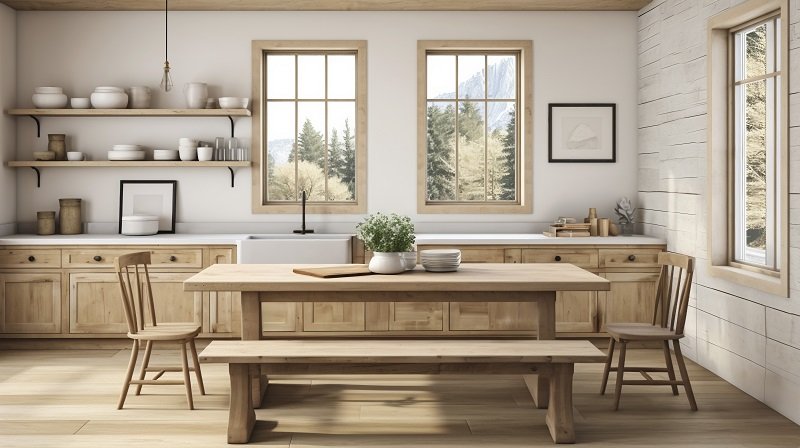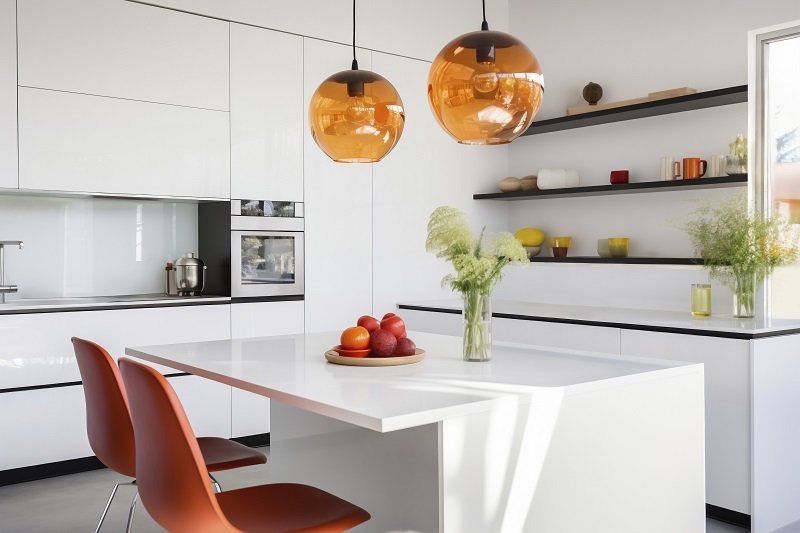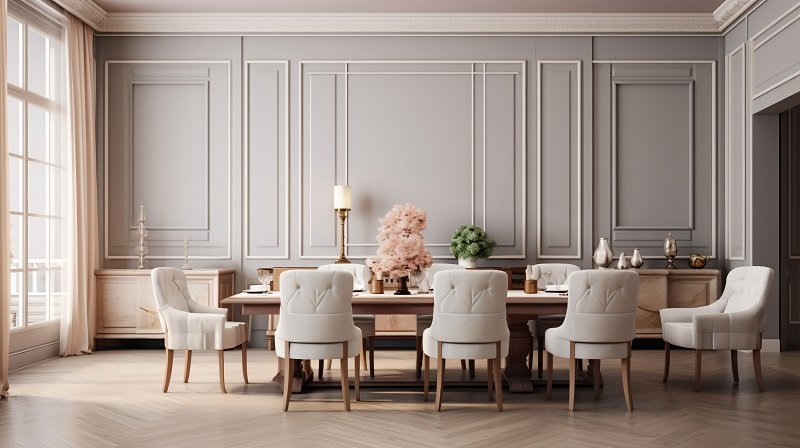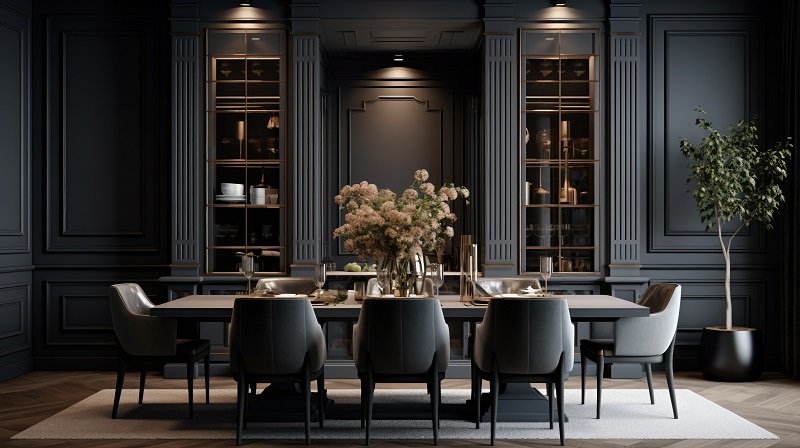- Living Room
- Dining Room
- Bed Room
- Custom Furniture

Discover the epitome of personalization with our Canadian-made furniture
Choose from a range of fabrics or luxuriant top-grain leather to create your perfect piece. Our expert team will guide you through the customization process, ensuring every detail is tailored to your taste and home. Elevate your space with furniture that's uniquely yours.
- Michael Amini Collection
- Sale
How to Match Dining Chairs with Your Table?

Introduction
Have you ever stepped into a dining room and felt as if something was off, although everything appeared to be in order? Perhaps the table was nicely laid and the lighting was perfect, but the whole atmosphere felt odd. It’s a frequent issue that many of us confront while attempting to design the ideal eating environment. The seats and table are each beautiful on their own, but they do not appear to work well together.
Matching dining chairs to your table is similar to choosing the perfect pair of shoes to match with a favorite dress. Just as the incorrect shoes may ruin your entire outfit, mismatched chairs can disturb the harmony and flow of your dining room. However, when done well, the table and chairs can create a room that is useful and reflects your style—one that welcomes family and friends to congregate, share stories, and create memories. So before paying the dining table set price consider matching chairs as well.
Venus Home Furniture understands that selecting the proper dining chairs can be and nerve-racking. With so many styles, materials, and patterns to choose from, where do you begin? Don’t worry—whether you want to keep it traditional, change things up, or create an entirely new style, we’ll help you every step of the way.
Understanding Your Dining Table Style
Your dining table sets the tone and controls the ambiance for the entire dining room. Your table, whether sleek and modern, rustic and attractive, or an elegant antique, should serve as the basis for your chair selection. Understanding your table’s design is the first step in choosing chairs that will match and enhance the overall appearance of your dining room.
Identify the Table’s Style
Your dining table’s design indicates volumes. Is it a contemporary masterpiece with sleek lines and a simple design? Or is it a conventional masterwork with intricate detailing and a rich, warm finish? Identifying the design of your table allows you to limit the types of chairs that will either blend in or stick out in a balanced way.
For instance, imagine you have a sleek, glass-top table with chrome legs—a true epitome of modern design. Pairing this with ultra-modern chairs, perhaps with similar metal accents, can create a cohesive and polished look. On the other hand, if your table is a sturdy farmhouse style, with weathered wood and a robust build, then chairs with a rustic touch, perhaps in a similar wood finish or even upholstered in a neutral fabric, might be the perfect match.
Material Matters
The material of your dining table is more than simply a surface for your dishes; it also plays an important role in the room’s appearance. Matching materials may produce a harmonious atmosphere, yet combining elements can offer a sense of surprise and interest.
Color Coordination
Color is the invisible thread that holds a room together. When choosing dining chairs, the color of your table acts as a guidepost. Should you match the chairs to the table’s color, go with a contrasting tint, or do something completely different? The option relies on the appearance you want to create.
For example, let’s say you have a dining table with a deep, espresso finish. You could choose chairs in lighter wood or even white to create contrast, making the table the focal point of the room. Alternatively, you could opt for chairs in the same deep hue, creating a monochromatic look that feels sophisticated and cohesive.
Match Wood Finishes
Matching wood finishes on your dining table and chairs is similar to combining great wine with a superb meal: they should complement each other and improve the whole experience. The finish of the wood may have a considerable impact on the tone of the space, ranging from the warmth of honeyed oak to the chilly elegance of black walnut.
Consistency in Wood Tones
When your dining table and chairs have the same wood tone, the outcome is a harmonic and coherent appearance. For example, if you have a table in a deep cherry finish, selecting chairs in the same wood may create a smooth flow, making the complete set feel like it was made to be together. This method is especially effective in traditional or formal dining rooms, where elegance and regularity are frequently desired.
However, maintaining this degree of consistency requires careful attention to detail. Wood textures, undertones, and finishes should all be analyzed before paying the dining table set price. Even within the same wood type, differences might exist, so choose pieces with complementary tones and textures. Consider selecting a matching set of jewelry—each piece should stand out on its own, but when worn together, they make a cohesive statement.
Mixing and Matching Wood Finishes
While matching wood finishes can give a consistent appearance, combining different finishes can offer character and depth to your dining room. This method is ideal for people who like a more varied or individualized look. The key is balance—mixing wood treatments should feel planned and chosen, rather than random.
A practical tip for mixing wood finishes is to ensure that there is a common thread between the pieces—whether it’s the style of the furniture, the undertones in the wood, or even the overall room décor. This helps to maintain a sense of harmony, even when the finishes differ.
Keep It Monochromatic
Monochromatic designs are similar to a symphony in a single key—each note works together to produce a harmonic and elegant arrangement. Keeping your dining table and chairs in the same color scheme is a simple but effective method to create a polished and coherent appearance and make it worth the dining table set price.
Creating a Unified Look
When you choose a monochromatic palette, every aspect of your dining room works together to create a unified look. For instance, if your table is a soft gray, choosing chairs in varied shades of grey or even a matching color might create a relaxing, elegant atmosphere. This method is especially successful in modern or minimalist settings, where simplicity and balance are essential.
Playing with Textures
To keep a monochromatic design from seeming flat or boring, include diverse textures and materials. If your dining table has a smooth, glossy surface, consider matching it with upholstered chairs in satin fabric. This textural contrast adds depth and draw to your monochromatic palette, making it feel rich and layered rather than flat.
Shake Up a Single Decor Style
Sticking to a single style in your dining room doesn’t mean everything has to be identical. In fact, varying the design elements within the same style can add visual interest and keep the space from feeling too predictable.
Variety Within Consistency
Consider a dining table and chairs with a midcentury modern design. The clean lines and useful design are consistent, yet the seats may have a different form or material than the table. This minor difference within a single design provides uniqueness while being consistent with the broader idea.
Personalizing a Unified Look
Sticking to one design helps you to create a unified area that represents your individuality. You may keep a coherent style while adding personal touches via slight variations—for example, a different chair design at the head of the table or including a bench.
Imagine a Scandinavian-style dining room with a simple, light wood table. To shake things up, you could introduce chairs in a similar style but with different seat materials—perhaps some are upholstered, while others are in woven rattan. This mix adds texture and interest while keeping the overall style consistent.
Pair Bold Colors
Pairing bold colors in your dining room is similar to combining strong flavors in a dish—it’s all about striking the proper balance to produce something appealing and memorable. When used correctly, vivid colors may revive a space, making your dining room the vibrant heart of your home.
Bold colors, whether on your table, chairs, or both, may create a dramatic focal point in your dining room. Consider a sleek, white dining table surrounded by seats in brilliant, jewel-toned velvet—maybe emerald green, deep sapphire, or rich burgundy. The vivid colors add a feeling of elegance and drama to the area, immediately boosting the dining experience. Using bold colors isn’t just about aesthetics; it’s about expressing personality. If you love the energy of a vibrant room, don’t shy away from bold choices. Just like accessorizing an outfit with a statement piece, bold colors can transform a dining room from ordinary to extraordinary.
While vivid colors may be inspiring, they must be carefully balanced to prevent overwhelming the room. One way is to select an appealing bright hue and pair it with gentler tones. For example, if your dining table is a striking black, pick chairs in a bright, opposing hue, such as mustard yellow, while keeping the rest of the room’s palette neutral—think white walls, plain wood floors, and minimalistic décor. This allows the strong colors to stand out without clashing.
Mix and Match
Mixing and matching chairs around your dining table is similar to organizing an art gallery; each item should stand out on its own while contributing to the overall harmony of the area. This method is ideal for individuals who enjoy various designs and want their dining area to have a distinct, individualized look if They want to pay the dining table set price.
Creating a Broad Look
Mixing and matching doesn’t mean chaos; it’s about thoughtful contrast and balance. You might start with a sturdy, wooden dining table and surround it with chairs of different shapes, materials, and colors. Perhaps one chair is upholstered in leather, another in fabric, while others feature metal or wood. This variety adds texture and visual interest, creating a dining area that feels both dynamic and cohesive. To prevent the mix from feeling too disjointed, consider sticking to a common element.
Flooring Color Also Must Be Considered
Just like the foundation of a house supports everything above it, the color of your flooring has a significant impact on how your dining table and chairs are viewed. The flooring serves as a canvas for your furniture, and its color can either improve or detract from the overall design.
1- Harmonizing with the Floor
When selecting dining chairs and a table, it’s essential to consider how they will interact with your flooring. If your floor is dark, such as rich mahogany or slate, lighter-colored furniture can provide a striking contrast, preventing the space from feeling too heavy. Conversely, if you have light-colored floors, darker furniture can ground the space, creating a balanced and inviting atmosphere.
2- Using Rugs to Define the Space
Rugs can also play a pivotal role in tying your dining furniture to the floor. A rug that complements both the furniture and the floor can help define the dining area, especially in open-concept spaces. For example, a patterned rug with both dark and light elements can bridge the gap between a dark floor and a lighter table, creating a cohesive look that ties the room together.
Seating Height, Width, and Spacing
When it comes to dining, comfort is king. The height, width, and spacing of your chairs in relation to your table can greatly impact the overall dining experience, ensuring that your guests feel at ease during meals. Standard dining tables are about 28-30 inches high, so chairs with a seat height of 17-19 inches usually work best. Typically, allow for about 24 inches of space per person at the table. This spacing gives everyone enough room to eat comfortably without bumping elbows. Leave at least 36 inches between the edge of the table and the wall or other furniture, so people can easily pull out chairs and move around the room.
Add a Bench
Adding a bench to your dining setup is like throwing a curveball into a classic design—it’s unexpected yet functional, bringing a casual and flexible element to the space. A bench offers versatility that traditional chairs can’t match. It can seat multiple people, often more than individual chairs would allow, making it a practical choice for large families or those who frequently host gatherings. Benches also bring a relaxed, communal feel to the dining area, encouraging a more laid-back atmosphere.
Use Chairs to Offset a Built-in Bench
A built-in bench can add architectural interest and functionality to a dining area, but it’s important to balance it with the right chairs. When you have a built-in bench, the chairs you choose for the opposite side of the table should complement, not compete with, the bench. If the bench is minimalist and modern, consider chairs with a bit more detail or texture to add contrast. On the other hand, if the bench is ornate, simple chairs might be the better choice to avoid overwhelming the space.
Conclusion
Choosing the correct dining chairs to complement your table is more than simply choosing the proper size and style and then paying the dining table set price—it’s about establishing a dining environment that shows your individuality, fits your practical needs, and adds to the overall ambiance of your home. Whether you prefer the sleek elegance of matching monochromatic sets or the eclectic appeal of mix-and-match styles, the key is to think about how each element—material, color, texture, and proportion—works together to create a coherent and inviting environment.
From balancing bright colors to considering the impact of your flooring, each selection influences the overall appearance and feel of your dining room. Remember that your dining room is more than simply a place to dine; it’s a place to socialize, celebrate, and create memories with loved ones. By carefully selecting your dining furniture, you can create a room that is not only practical but also reflects your personal style and taste. At Venus Home Furniture, we’re here to guide you through every step of the process, ensuring that your dining room is a perfect blend of comfort, functionality, and aesthetic appeal.
FAQs
1- How do I choose the right size dining chairs for my table?
When choosing dining chairs, ensure that there are at least 12 inches between the seat of the chair and the tabletop for comfortable seating. Also, leave enough space between chairs—typically around 24 inches—to ensure everyone has enough room.
2- Can I mix and match different chair styles around the same table?
Absolutely! Mixing and matching chairs can create a unique, eclectic look. The key is to maintain some common elements, such as color, material, or design style, to ensure the overall look is cohesive.
3- What should I consider when pairing bold-colored chairs with my table?
When pairing bold-colored chairs with your table, consider the room’s overall color scheme. Bold colors work best when they either complement or contrast harmoniously with the table and the surrounding decor. Neutral-colored tables often pair well with bold chairs.
4-Is it okay to have different chairs at the ends of the table?
Yes, using different chairs at the ends of the table is a great way to add visual interest and create a focal point. End chairs can be larger or more ornate than side chairs, providing a subtle sense of hierarchy.
5- How can I match dining chairs with a glass or metal table?
Glass and metal tables often have a modern, sleek look, so consider pairing them with chairs that enhance that style, such as minimalist metal chairs or upholstered chairs with clean lines. Avoid overly ornate or traditional chairs that might clash with the modern aesthetic.
6- What’s the best way to match wood finishes between a table and chairs?
When matching wood finishes, either choose a close match for a cohesive look or opt for contrasting finishes to add depth and interest. For example, pairing a dark wood table with lighter wood chairs can create a balanced and visually appealing contrast.
7- Should all the chairs in a dining room match the table exactly?
Not necessarily. While matching chairs can create a unified look, mixing different chairs can add personality and style. The important thing is that the overall combination feels balanced and intentional.
8- How do I match dining chairs with an extendable table?
For an extendable table, consider chairs that are easy to move and adjust. Folding or stackable chairs can be practical, or you might choose chairs that can be easily rearranged to accommodate the table’s different configurations.
9- Can I pair traditional chairs with a modern table?
Yes, pairing traditional chairs with a modern table can create an interesting contrast and add character to your dining space. The key is to find a common element, such as color or material, that ties the pieces together.
10- What are some alternatives to traditional dining chairs?
Alternatives to traditional dining chairs include benches, which can add a rustic or contemporary feel, or even upholstered armchairs for a more luxurious, comfortable dining experience. Mixing in a bench with chairs on the other side of the table can also create a casual, versatile look.

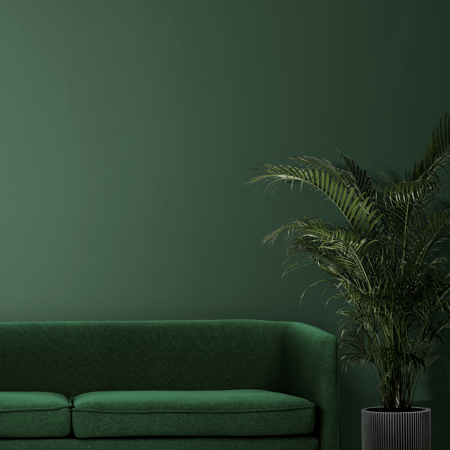
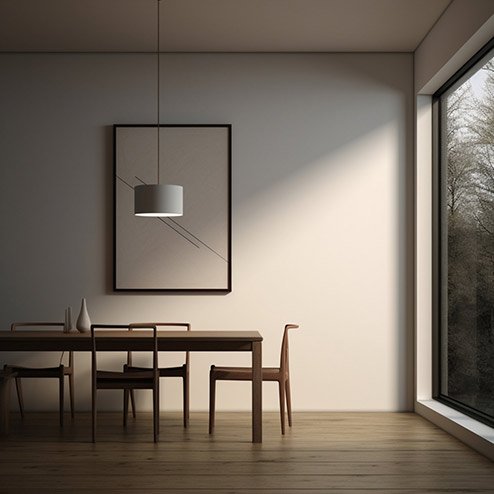
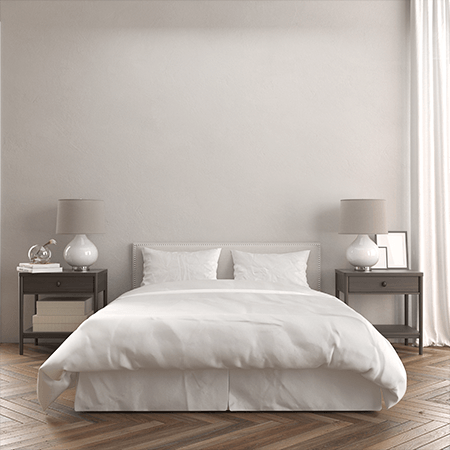
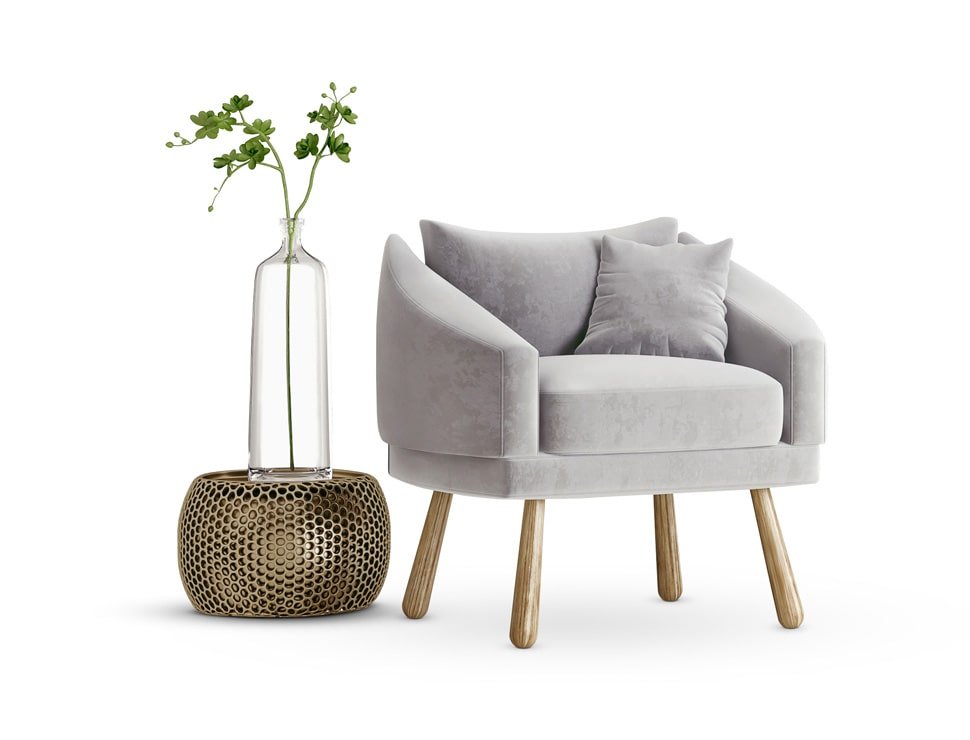
 Chandeliers
Chandeliers Clocks
Clocks Decorative Accent
Decorative Accent Mirrors
Mirrors Floor Lamps
Floor Lamps Table Lamps
Table Lamps Wall Art
Wall Art
